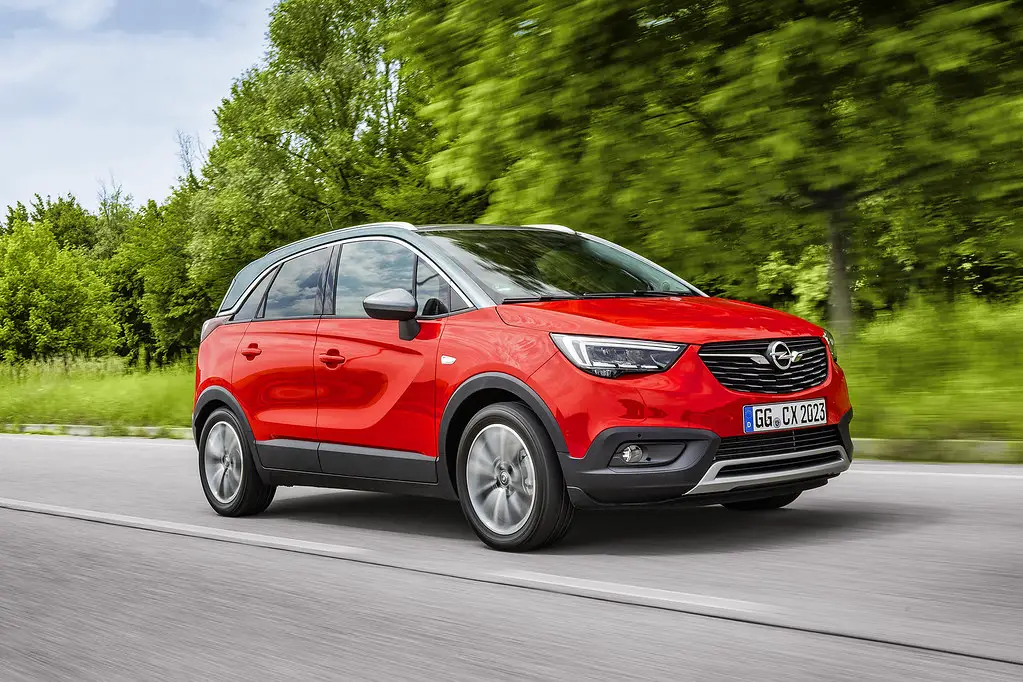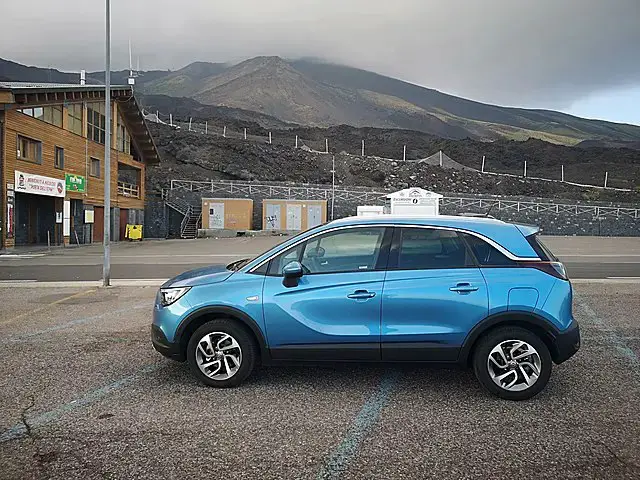Review: Vauxhall Crossland ( 2017 - 2024 )

Vauxhall Crossland I is a classic Vauxhall in the sense that it’s another Vauxhall designed and thought up in 5 minutes, during a coffee break, by people who couldn't care less about cars. And yet, the Vauxhall Crossland I was the car Vauxhall needed.
The Vauxhall Crossland came at a critical time for Vauxhall. Escaped from American tyranny and under French management, Vauxhall was an inefficient manufacturer and more technologically outdated than the german goverment. And the PSA alliance saw an opportunity in this dying brand so they bought it, stuffed it, washed it and brought it back to life.
And the most important Vauxhall car made under PSA’s watch was the Crossland. The Crossland had a mission to be everywhere and loved by almost everyone. And the Crossland even managed to attract a lot of people, both old and new customers.
The French recipe was simple. Take some garlic, mix it with a chopstick, take that chopstick, insert it gently into the bottom, and wait, that’s the recipe for the new Insignia.
The French looked at existing Vauxhall models and decided the following. First, they retired the Meriva and the legendary Zafira because people are no longer interested in vans with windows, everyone now wants crossovers. Then they withdrew the wagon version of the Astra because people are no longer interested in hatchbacks in the hearse version, everyone wants cross-over. Then they figured that the time for compact sedans is over too, so they’re going to retire the Insignia soon. And most importantly, they saw that Opel doesn’t have a cheap crossover. Exactly the most important area in the car industry right now.
And look how they took a Citroen C3 Aircross, stuffed it, kissed it on the forehead and slapped an Vauxhall badge on it. What’s more, the Vauxhall Crossland is less than 500 euros away from the Dacia Duster, known as the cheapest crossover on the market. They’ve given it a small petrol engine stolen from the Peugeot 208 and a diesel that nobody buys. They took the exact interior from any contemporary Opel and sent it out into the wide world.

Vauxhall Crossland Engines
Petrol
1.2 Turbo EB2DT with 82, 110 and 130 horsepower – A totally reliable engine, with one mention. We have discussed the types of timing of an engine, and in the comments, there was also discussion of oil timing. Except that type of timing was only used by Ford, in 46 BC (Before Crypto), on the 1.8 TDDI engine. Apparently, this 1.2 Turbo also has a timing belt that runs through oil because why not. The problem is that if you don’t change the belt in time and let it wear long enough, what disintegrates from the belt travels with the oil all the way through it. That means you’ll have bits of the belt running through the engine. And usually, the oil pump breaks down too. But atleast it comes with factory LPG option.
Diesel
- 1.5 BlueHDi DV5 of 110 and 120 horsepower – Mounted to the facelift version, but does it make sense to buy a diesel these days, especially for a city cross-over? Especially as this engine is strangled by pollution regulations more than a tight leather wearer is strangled, and on top of that, it gets an AdBlue installation to convince you to give up diesel completely.
- 1.6 HDi DV6 of 99 and 120 horsepower – You can tell the car was hastily assembled because they put the old 1.6 HDi in while the new 1.5 engine was under development. But that at least means you’ve got an engine at the end of its life, and the fact that this moving disaster that used to make a fuss over Ford, Peugeot and Mini, has turned out to be a reliable engine in the end.

Vauxhall Crossland Reliability Issues
- As with the Duster, the low price has to be reflected somewhere. As with the Duster, the price is reflected in the interior quality which would be acceptable if you understood the concept that “what you pay is what you get.” But we don’t, we want S500 for Logan money, to be petrol engine but have diesel consumption, to be big on the inside and small on the outside, to be manual gearbox as it’s more reliable but to shift like an automatic, or even to possibly receive a comment on this site from Salma Hayek.
- Opel Crossland I is a city car because on the long road it’s neither very stable nor very soundproofed. Well, you won’t swallow a fly or bug whilst driving, but it’s still not a car you’d want to drive long distances.
- The infotainment system is a fan of Hope Radio 103.2 . That’s why you’ll lose frequencies more frequently than I lose coherence or a minimum wage worker loses enthusiasm.

Vauxhall Crossland Verdict
A hastily made yet so necessary car. So we have a city crossover with blender-sized turbo petrol, a manual gearbox, a few basic features and a price very close to that of the Duster with blender-sized turbo petrol, a manual gearbox and a few basic features. And that was exactly what Vauxhall needed in these times – a cheap, petrol-powered crossover with a manual gearbox. And now people are flocking to buy the Crossland more than people used to flock to buy Sasha Grey tapes or hours of Channel designs. Opel Crossland I – a necessary evil. Without it, we could live just as well, but Vauxhall would’ve gone bankrupt.
What engines do you recommend? Obviously, I’ll go for the 110 horsepower 1.2 Turbo for petrol and 1.6 HDi for diesel, but this car was made for this microscopic 1.2 Turbo petrol. Not to say I didn’t, but this one was in stock with immediate delivery.
Similar Articles

Review : Seat Arosa ( 1997 - 2004 )

Review : Toyota Verso AR20 ( 2009 – 2013 )

Review : Skoda CitiGO ( 2011 - 2020 )
Write an answer
- Review : Seat Arosa ( 1997 - 2004 ) 01 October 2025
- Review : Toyota Verso AR20 ( 2009 – 2013 ) 10 November 2025
- Review : Skoda CitiGO ( 2011 - 2020 ) 02 August 2025
- December 2025
- November 2025
- October 2025
- August 2025
- July 2025
- April 2025
- March 2025
- February 2025
- January 2025
- December 2024
- November 2024
- October 2024
- August 2024
- July 2024
- June 2024
- May 2024
- April 2024
- March 2024
- February 2024
- January 2024
- December 2023
- November 2023
- October 2023
- September 2023
- August 2023
- July 2023
- June 2023
- May 2023
- April 2023
- March 2023
- February 2023
- January 2023
- December 2022
- November 2022
- October 2022
- September 2022
- August 2022
- July 2022
- June 2022
- May 2022
- March 2022
- April 2021
- January 2021
- December 2020
- November 2020
- October 2020
- September 2020
- August 2020
- July 2020
- March 2020